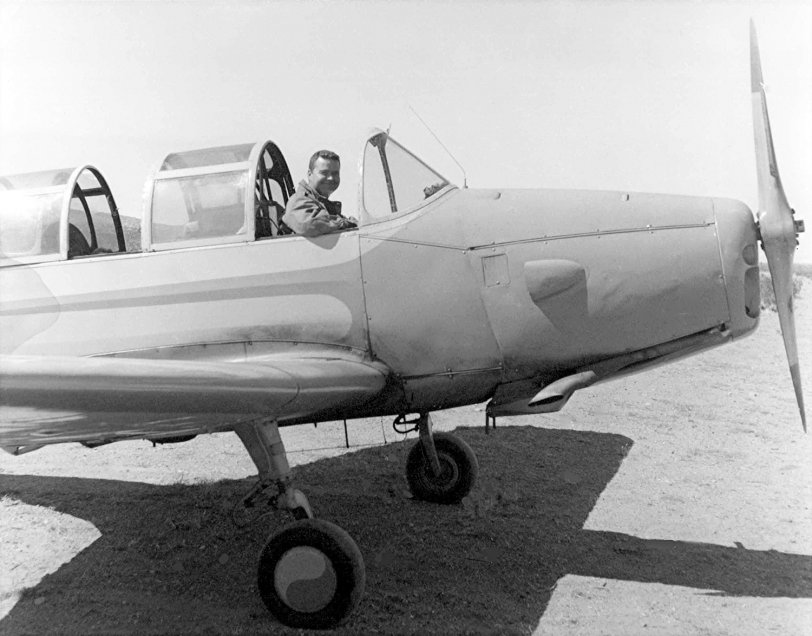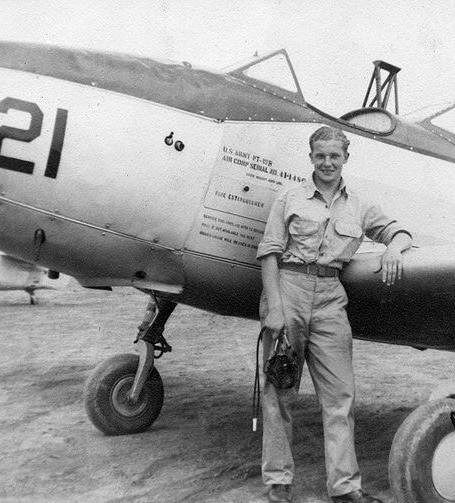


Framed or unframed, desk size to sofa size, printed by us in Arizona and Alabama since 2007. Explore now.
Shorpy is funded by you. Patreon contributors get an ad-free experience.
Learn more.

- Baldwin 62303
- Baldwin VO-1000
- Cold
- No expense spared
- Tough Guys
- Lost in Toyland
- And without gloves
- If I were a blindfolded time traveler
- Smoke Consumer Also Cooks
- Oh that stove!
- Possibly still there?
- What?!?
- $100 Reward
- Freeze Frame
- Texas Flyer wanted
- Just a Year Too Soon
- WWII -- Replacing men with women at the railroad crossing.
- Yes, Icing
- You kids drive me nuts!
- NOT An Easy Job
- I wonder
- Just add window boxes
- Icing Platform?
- Indiana Harbor Belt abides
- Freezing haze
- Corrections (for those who care)
- C&NW at Nelson
- Fallen Flags
- A dangerous job made worse
- Water Stop
Print Emporium
In My PT-26: 1958

Lancaster, California in 1958. I'm checking out a desert landing strip. View full size.
When downside up
It can't be seen behind the pilot because of the canopy, but the 26 and the 19 had, for both occupants' entertainment, a fairly stout metal pylon within that area meant to keep weeds, mud and harder things away from their heads, if the student (NEVER the instructor) managed to flip the airplane while rolling on the ground. Between manufacture of the 19 and 26 was the PT-23, fitted not with an inline engine as these but a radial engine.
I always wondered if because the Canadians called these Cornells and the much faster and bigger AT-6 (SNJ in the U.S. Navy) was called a Harvard by them, would something really slow and small be named after a community college.
Here's a PT-19 showing off its protective pylon. I hope the smiling young aviator survived his immediate future and became a very old and happy man. The original photo is signed "Best wishes, Ken 1943".

It's a convertible
Both the front and rear canopies are on tracks.
The plane can be flown with either canopy slid back as shown in the photo or with them forward in the closed position.
Not Open Cockpit
What differentiated the PT-26 Cornell from the PT-19 was that it had an enclosed cockpit. That's what the Royal Canadian Air Force wanted. Along with the T-6 Harvard (known to Americans as the Texan) the Cornell was a mainstay of the Commonwealth Air Training Plan. Pilots would do their initial training on a Harvard and elementary training on planes like Moths and eventually Cornells before going on to service training on other aircraft depending on ability.
When I was a kid the RCAF used to have one of their storage stations for surplus aircraft at RCAF Saskatoon. There were a lot of Harvards and Cornells there into the late 1960s waiting for sale by Crown Assets Disposal (as it was known then). Being born long after the war we really didn't understand the significance of those old tail draggers.
























On Shorpy:
Today’s Top 5